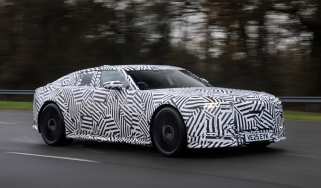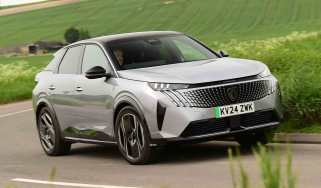Toyota Avensis Saloon (2003-2008) review
With an unbeatable diesel range and other engineering upgrades, the Avensis is good to drive, but falls short of its competitors.

Driving:
Alterations to the British-built Avensis in 2006 saw the steering and suspension reworked. The modifications are intended to give the family car a sharper turn-in, and there's no doubt that the Avensis has much more lively handling. The steering still offers very little feedback, but drivers will have more fun than they did in the pre-facelift model. On long motorway trips, the Toyota settles into a relaxed cruise, gliding over rough surfaces with ease. Intrusive wind noise is the sole distraction at high speeds. 1.8-litre and 2.0-litre petrol versions are OK but the D-4D diesels are really impressive, particularly the range-topping T180. Using the engine from Lexus's IS 220d, this variant is smooth and refined throughout its rev range, and summons effortless acceleration. It's a shame the slack gearbox doesn't like to be rushed.
Marketplace:
It's not glamorous, striking or even particularly desirable, but the Avensis makes great celebrity transport. That's because it blends into the background like nothing else - if you want anonymity, the conservative family car won't disappoint. What it previously lacked was panache; the facelift added a dose of flair, though you'll be hard pushed to spot it externally. Restyled lights and grille, plus indicators in the wing mirrors, are the prime changes. Offered in saloon, hatchback or Tourer estate form, the Avensis range today is broad and, reflecting its popularity with fleets, focuses on the 2.0-litre and 2.2-litre D-4D turbodiesels.
Owning:
The Avensis's cabin still doesn't feel special, despite facelift changes. The centre console was tweaked but remains dull to look at, while the dour plastics are brilliantly well assembled, but do little to inspire. The seats remain too high as well, and rear space is nothing to shout about. Equipment levels are high and the stereos sound good, but that wind noise does spoil the quality feel at speed. Generous equipment levels, including standard (if basic) sat nav on many models, will keep occupants amused, while drivers will be pleased by the good fuel economy of nearly every variant. Insurance ratings are very low too, though Toyota does stick to 10,000-mile service intervals: most rivals have stretched pitstops. But retained values are OK and reliability has proven to be absolutely superb.



